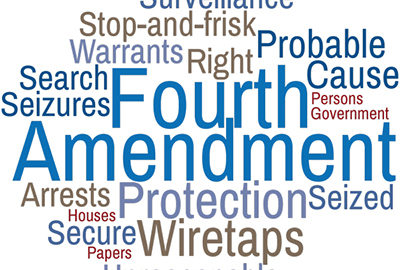Anonymous Tip Sufficient Indicium of Reliability for Reasonable Suspicion
United States of America v. Ibrahim McCants
No. 17-3103
United States Court of Appeals for the Third Circuit
Decided April 5th, 2019
Federal Appeals in the Third Circuit Court of Appeals
Federal Appeals Lawyer in Philadelphia
ISSUE:
Whether an anonymous 911 tip describing a man wearing a red hat with braids beating up a woman and maybe had a gun, provides a sufficient indica of reliability for reasonable suspicion of ongoing criminal activity allowing the police to conduct a search of a man wearing a red hat and braids in the neighborhood.
HOLDING:
The Court held that the police may conduct brief investigatory stops under Terry v. Ohio, 392 U.S. 1 (1968) if they have reasonable articulable suspicion that criminal activity is afoot. Such reasonable suspicion requires at least a minimal level of objective justification for making the stop and more than an inchoate and unparticularized suspicion or hunch or criminal activity.
A caller’s anonymous tip bore sufficient indicia of reliability for the Fourth Amendment’s reasonable suspicion because it provided information helpful to investigations. The Court has identified five factors that indicate reliability for anonymous tips and they are not all required to deem an anonymous tip reliable.
Federal Criminal Appeals Lawyer through the United States
FACTS OF THE CASE:
In June of 2015, a woman called 911 to report an ongoing domestic dispute she had been witnessing first hand. During her call, she described a physical fight between the defendant, Ibrahim McCants, and his girlfriend, stating that he was beating her up really bad, he was wearing a red hat and had braids, and it looked like he had a gun. She described his appearance, which perfectly matched when the police arrived and engaged with McCants. They initiated a Terry stop and frisked him because of the nature of the call for service. During the pat down, they found a loaded handgun and distributable amounts of heroine. McCants was charged with unlawful possession of a firearm and possession with intent to distribute heroin, and sentenced to 120 months’ imprisonment followed by three years of supervised release.
Federal Appeals Lawyer in Pennsylvania
COURT’S ANAYLSIS:
The Court held that a caller’s anonymous tip bore sufficient indicia of reliability for the Fourth Amendment’s reasonable suspicion. The Fourth Amendment prohibits unreasonable searches and seizures. Searches require warrants supported by probable cause however, an officer may conduct a brief investigatory stop under Terry v. Ohio, 392 U.S. 1 (1968) if they have reasonable articulable suspicion that criminal activity is afoot. Reasonable articulable suspicion requires at least a minimum level of objective justification for making the stop and more than an undeveloped and unparticularized suspicion or hunch of criminal activity. Anonymous tips can provide information helpful to investigations and can create reasonable suspicion of ongoing criminal activity. The Court has identified five factors that indicate reliability for anonymous tips:
(1) The tip information was relayed from the informant to the officer in a face-to-face interaction such that the officer had an opportunity to appraise the witness’s credibility through observation.
(2) The person providing the tip can be held responsible if her allegations turn out to be fabricated.
(3) The content of the tip is not information that would be available to any observer.
(4) The person providing the information has recently witnessed the alleged criminal activity.
(5) The tip predicts what will follow, as this provides police the means to test the informant’s knowledge or credibility.
Federal Appeals Lawyer in New Jersey
While the 911 call here did not present all of the reliability factors, this deficiency does not preclude a finding of reasonable suspicion because a tip does not need to bare all of the indicia, nor any particular indicium, to supply reasonable suspicion. The tip was sufficiently reliable because it met two of the factors: the informant witnessed the alleged criminal and can be held
responsible if the allegations turn out to be fabricated.
In this case, the caller’s anonymous 911 tip bore sufficient indicia of reliability because the called used the 911 system to report firsthand knowledge of ongoing domestic violence, and the informant gave an accurate description that was quickly confirmed by the police. This case differs from Florida v J.L., 529 U.S. 266 (2000), which determined that a bare report of an unknown, unaccountable informant who did not explain the bases for their tip lacked sufficient indicia of reliability.
Federal Appeals Lawyer in Delaware
Here, the 911 caller gave a firsthand account of ongoing criminal activity, as well as a highly specific and accurate description of the suspect’s location, clothing and hair. In Navarette, 572 U.S. 399 – 401,the Court determined that an eyewitness’s firsthand knowledge of ongoing criminality lends significant support to the tip’s reliability and a 911 call bolsters the tip’s credibility because the system is able to identify callers therefore safeguarding against false reports.
